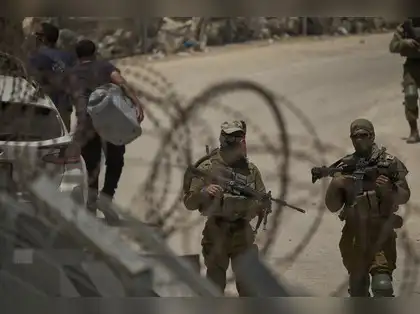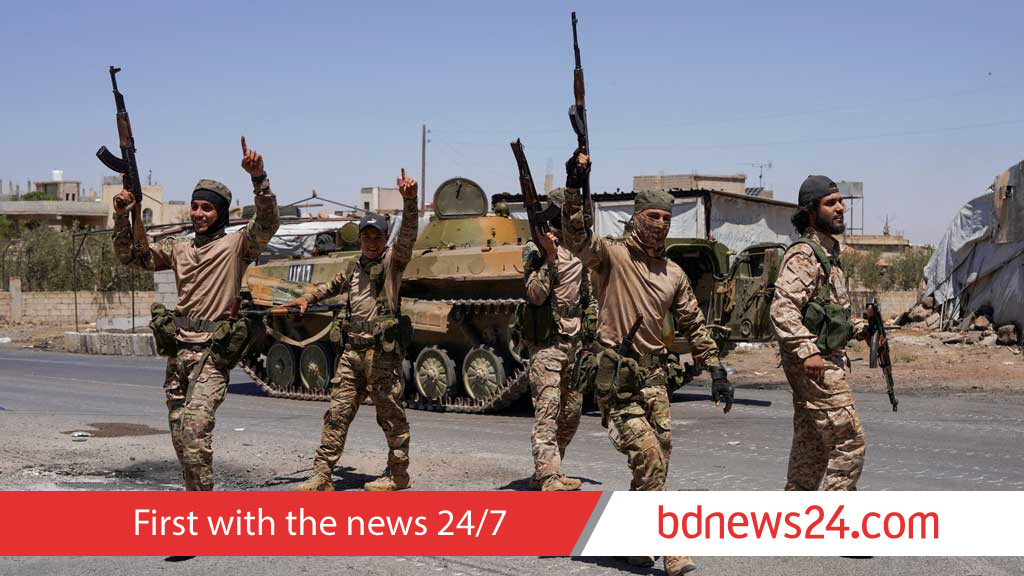Ceasefire Agreement Reached Between Israel and Syria Amidst Ongoing Clashes in Sweida

A ceasefire agreement between Israel and Syria has been brokered by the US, marking a significant development in the volatile situation in Syria's Sweida province. The agreement, supported by Turkey, Jordan, and other neighboring countries, comes amidst ongoing inter-communal clashes and external intervention. Despite the ceasefire, reports indicate that clashes have continued in parts of Sweida, raising concerns about the fragility of the truce.
Israel Permits Limited Entry of Syrian Forces into Sweida

As part of the ceasefire arrangement, Israel has agreed to allow limited entry of Syrian internal security forces into the Sweida district for a 48-hour period. According to an Israeli official, this decision was made in response to the ongoing instability in the region. Meanwhile, the Syrian presidency announced plans to deploy a dedicated force to the south in order to quell the clashes and coordinate political and security measures.
Renewed Clashes and Displacement Crisis in Sweida

Despite the announced ceasefire, clashes have persisted between Bedouin fighters and Druze factions in the north and west of Sweida province. The ongoing violence has resulted in a significant humanitarian crisis, with the UN migration agency reporting nearly 80,000 people displaced since Sunday. Essential services such as water and electricity have collapsed, and telecommunications have been disrupted, severely hampering humanitarian aid deliveries.
Withdrawal of Syrian Forces and Israeli Airstrikes

Prior to the ceasefire agreement, Syrian forces who had been engaged in fighting with Druze militias reportedly began withdrawing from Sweida province. However, following the withdrawal, Israeli airstrikes were reported near Sweida, marking the first such attack in the area after the Syrian troop withdrawal. These strikes followed earlier Israeli actions targeting government forces' convoys heading into Sweida and other areas of southern Syria.
Mediation Efforts and Truce Agreements

The US, Turkey, and Arab countries have been actively involved in mediating a truce between Druze groups and the Syrian government. Under the terms of this accord, Druze factions and clerics have been appointed to maintain internal security in Sweida following the withdrawal of government forces. However, renewed clashes between Druze and Bedouin groups have prompted the Syrian Interim President Ahmad al-Sharaa to announce the government's intention to send a "specialized force" to resolve the conflict.
Israel's Stance on Southern Syria and the Druze Community

Israeli Prime Minister Benjamin Netanyahu has reiterated Israel's commitment to maintaining a demilitarized zone in southern Syria and protecting the Druze community. This stance reflects Israel's long-standing policy toward the region, particularly in light of what it views as a distrust of Syria's new Islamist-led leadership. Israel has also announced that it is sending humanitarian aid to Sweida province in response to the escalating humanitarian situation.
Casualty Reports and Allegations of Human Rights Violations

Reports from the Syrian Observatory for Human Rights (SOHR) indicate that nearly 600 fighters and civilians have been killed on both sides during the recent clashes. The Syrian Network for Human Rights has documented 321 deaths since Sunday, including medical personnel, women, and children, with allegations of "field executions" by all parties involved. The UN Human Rights Office has urged Syria's interim authorities to ensure accountability for these reported rights violations, including summary executions and kidnappings.
Stakeholders and Their Positions

Sweida province, a predominantly Druze-majority area in southern Syria, has been the epicenter of the recent conflict. The Druze community, a religious minority with a significant presence in both Syria and Israel, has found itself caught in the crossfire. The Syrian government, under Interim President Ahmad al-Sharaa, has intervened to restore order but has faced accusations of siding with Bedouin tribes against the Druze. Sunni Bedouin tribes have also been involved in the conflict, engaging in tit-for-tat kidnappings and attacks with Druze armed factions.
International Involvement and Concerns

Israel has intervened with airstrikes, citing the protection of the Druze minority and the need to maintain a demilitarized zone as its "red lines." The United States has mediated the ceasefire agreement, with Ambassador to Turkey Tom Barrack confirming the truce and urging all sides to lay down arms. Secretary of State Marco Rubio has expressed deep concern over civilian attacks. Turkey and Jordan have also supported the ceasefire efforts. The United Nations has expressed concerns over human rights violations, displacement, and the humanitarian crisis, urging humanitarian access and accountability.